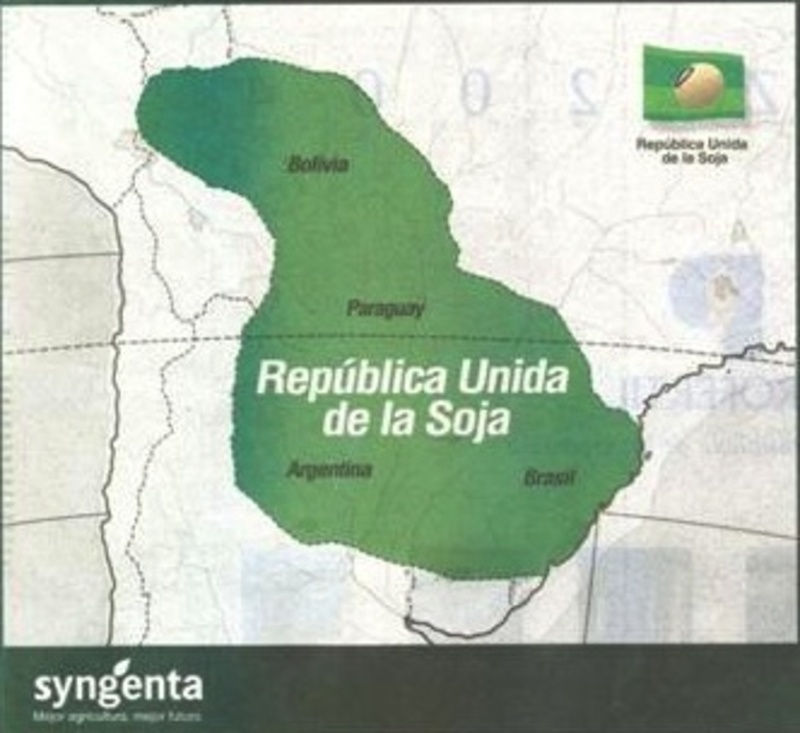
The United Republic of Soybeans is the name Syngenta multinational company gave to an entire region of Latin America, namely the Southern Cone, comprising the countries of Brazil, Argentina, Uruguay, Paraguay and Bolivia in an advertisement published by conservative Argentine newspaper Clarín and La Nación in 2003. While this example of neocolonial toponomy by a private company migth seem surprising, it needs to be inscribed in a longer history of extractivism in the region. After all, Argentina’s name -as well as the name Rio de la Plata- directly refer to the activity of silver mining developed by the European colonizers since the conquest of the Americas in the 16th century. While this add clearly challenged the sovereignty of the Nation-States in favor of an absolute territorialization by a private multinational, it seems particularly interesting to analyze the process at play. Who are the actors claiming sovereignty and a right to self-determination regarding the productive model in the region? What kind of conflicts and alternative practices have developed around the soybean extractive frontier?
The following texts introduce the case and set an initial definition to think through the genealogies of extractivism and neo-extractivism and ruptures and continuities in the practices that have impacted the region.
Svampa, M. (2019). Introduction and Dimensions of Neo-Extractivism, Defining Institutions in Neo-extractivism in Latin America: Socio-environmental Conflicts, The Territorial Turn, and New Political Narratives (1st ed.). Cambridge University Press. https://doi.org/10.1017/9781108752589
https://grain.org/article/entries/4749-the-united-republic-of-soybeans-take-two


Perhaps it’s worth citing Gustafson’s recent book on Bolivia and Neo-Extractivism, “Bolivia in the Age of Gas” (Duke UP).